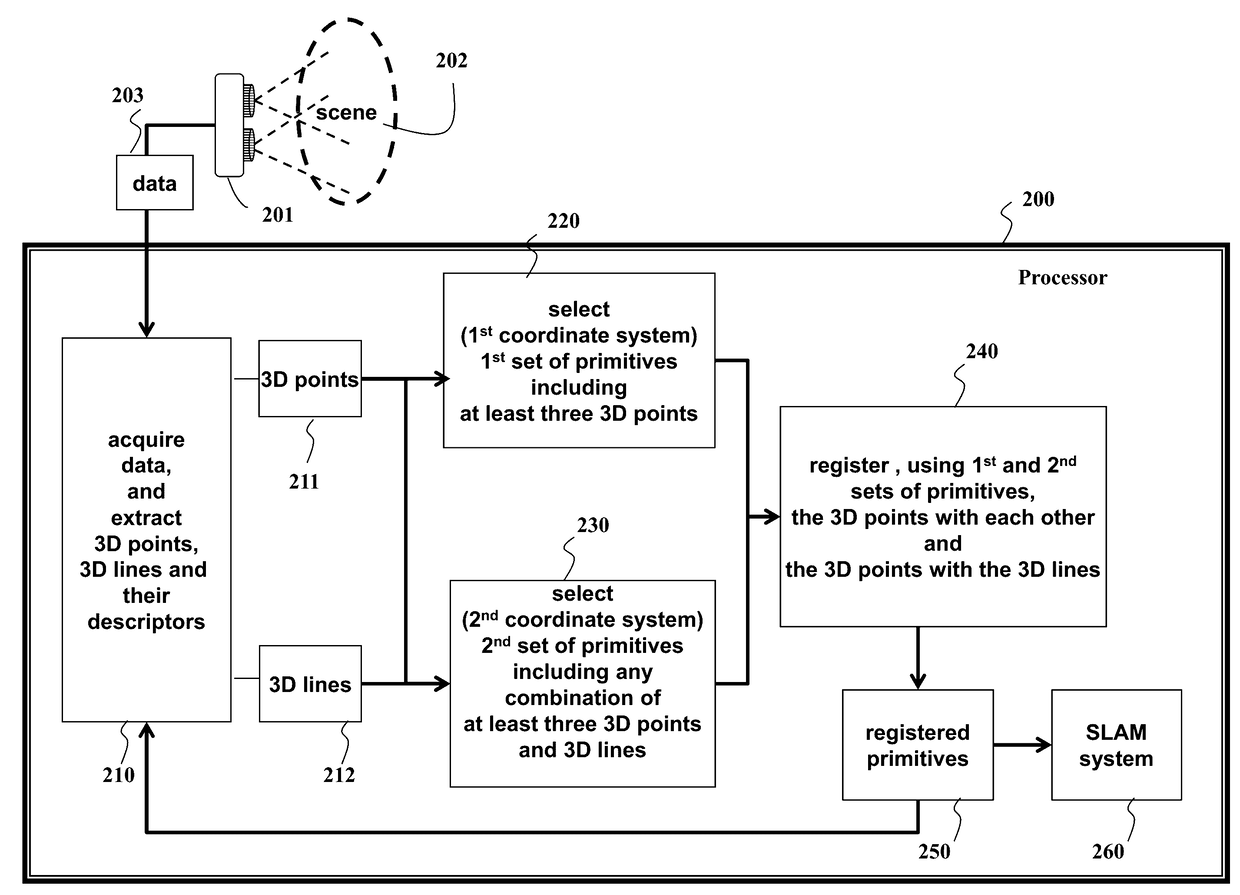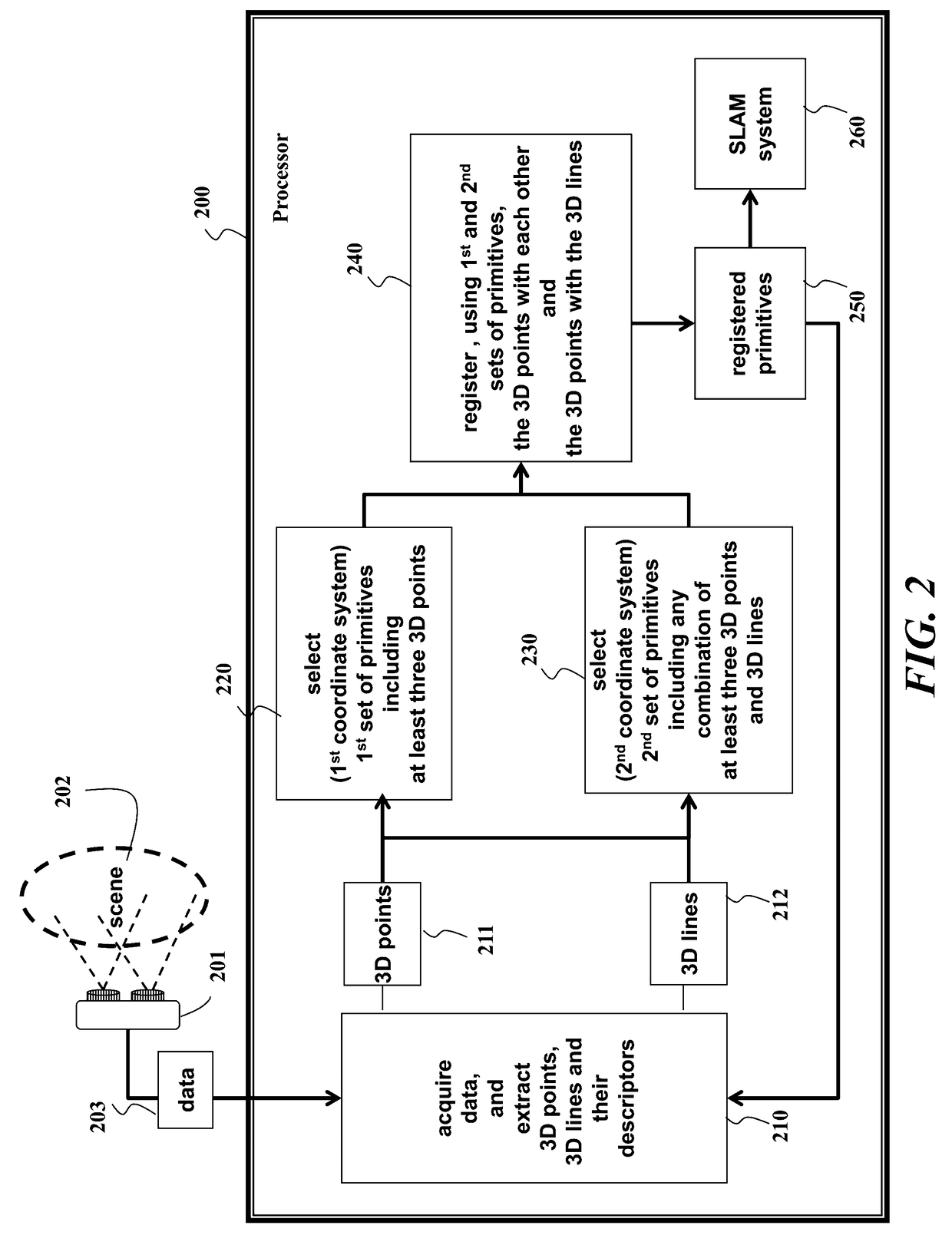System and Method for Hybrid Simultaneous Localization and Mapping of 2D and 3D Data Acquired by Sensors from a 3D Scene
- Summary
- Abstract
- Description
- Claims
- Application Information
AI Technical Summary
Benefits of technology
Problems solved by technology
Method used
Image
Examples
Embodiment Construction
[0018]The embodiments of the invention provide a system and method for hybrid simultaneous localization and mapping of 2D and 3D data acquired by a red, green, blue, and depth (RGB-D) sensor.
[0019]FIG. 1A schematically shows the key idea of “pinpointing” 3D points from 2D points used by embodiments of our invention. Triangles 100 represent a sensor at different poses (viewpoints), i.e., different 3D positions and 3D orientations. Alternatively, multiple sensors can be used.
[0020]Dashed lines 101 represent the lines associated with 2D measurements (i.e., 2D keypoints with invalid depths), and circles 102 and solid lines 103 represent 3D measurements. Triangulated 3D points are shown with diamonds 104. The triangulation uses the intersection of the lines 101. In addition to point-to-point correspondences that are used in a conventional SLAM system, we use line-to-point and line-to-line correspondences to generate long-range constraints. The lines defined by the 2D points (keypoints wi...
PUM
 Login to View More
Login to View More Abstract
Description
Claims
Application Information
 Login to View More
Login to View More - R&D
- Intellectual Property
- Life Sciences
- Materials
- Tech Scout
- Unparalleled Data Quality
- Higher Quality Content
- 60% Fewer Hallucinations
Browse by: Latest US Patents, China's latest patents, Technical Efficacy Thesaurus, Application Domain, Technology Topic, Popular Technical Reports.
© 2025 PatSnap. All rights reserved.Legal|Privacy policy|Modern Slavery Act Transparency Statement|Sitemap|About US| Contact US: help@patsnap.com



